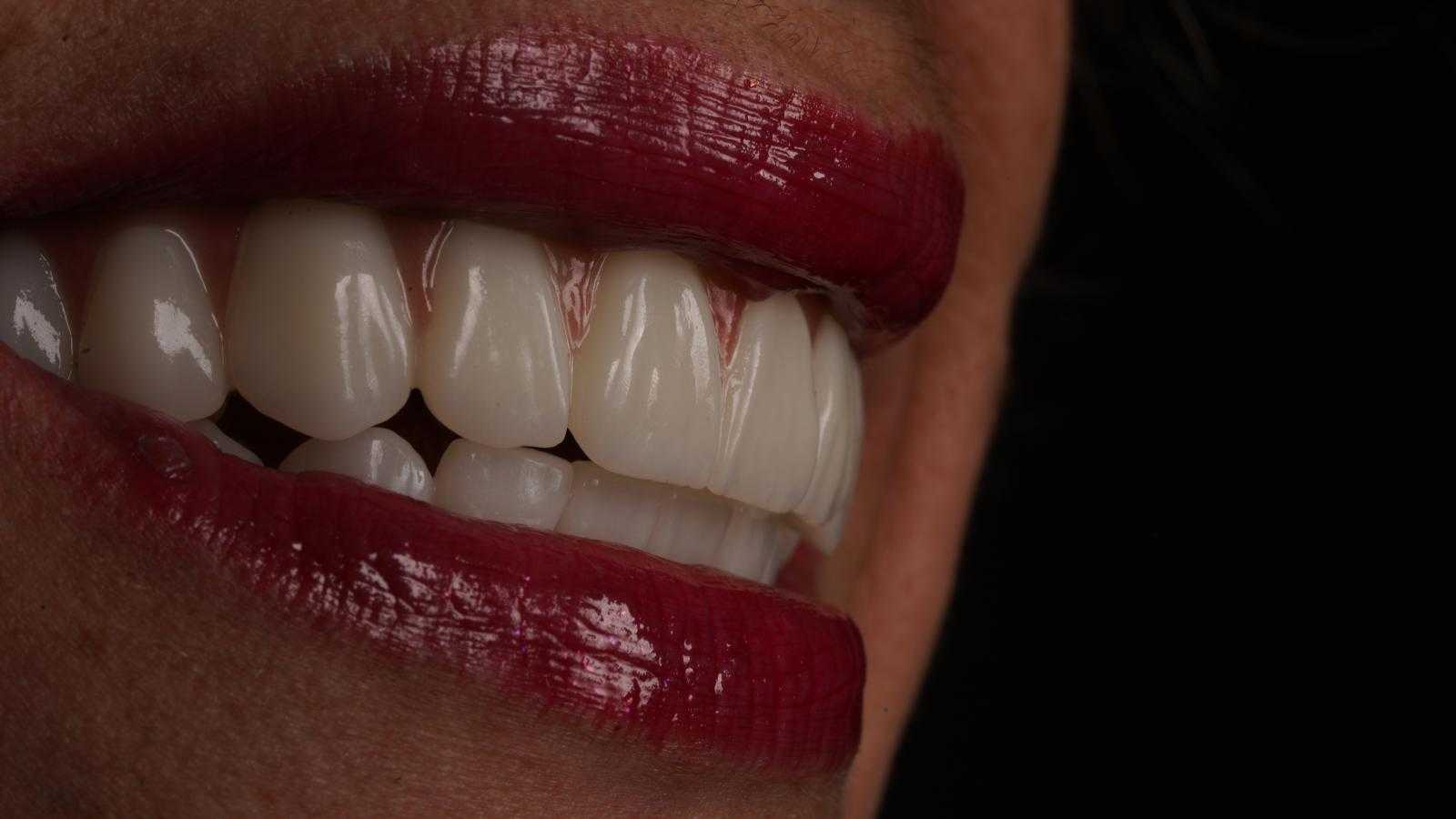Explore the Cost of Dental Bridges in Turkey

Missing teeth can affect more than just your appearance. They can make eating difficult, change how you speak, and even cause other teeth to shift out of place, leading to further dental problems. Fortunately, modern dentistry offers excellent solutions, and one of the most popular and effective is the dental bridge.
Increasingly, people are looking beyond their home countries for high-quality, affordable dental care. Turkey has emerged as a leading destination for dental tourism, offering state-of-the-art treatments, experienced dentists, and significantly lower costs compared to countries like the UK, US, or other parts of Europe. Getting dental bridges in Turkey could be the perfect way to restore your smile, confidence, and oral function without breaking the bank.
This guide will walk you through everything you need to know about dental bridges, the procedure involved, and why Turkey might be the ideal place for your treatment. We'll cover the types of bridges available, what to expect during the process, the costs involved, and how to choose the right clinic for your needs.
What Exactly is a Dental Bridge?
Think of a dental bridge as just that – a bridge spanning the gap left by one or more missing teeth. It's a fixed dental restoration, meaning unlike dentures, it's permanently attached in your mouth and isn't removable.
A typical bridge consists of two main parts:
- Abutment Teeth: These are the natural teeth (or sometimes dental implants) on either side of the gap. They act as anchors for the bridge.
- Pontic(s): This is the artificial tooth (or teeth) that fills the gap where the natural tooth was missing.
The abutment teeth are usually prepared by having some enamel removed to make space for dental crowns. These crowns are then placed over the prepared abutment teeth. The pontic is fused between these crowns, creating a single, solid unit that "bridges" the empty space. The entire structure is then cemented securely into place by your dentist.
The primary purpose of a dental bridge is to restore the natural look and function of your teeth, giving you back a complete smile and improving your ability to chew and speak properly.
Why Should You Consider Getting a Dental Bridge?
Losing a tooth can have several negative consequences beyond the obvious gap in your smile. A dental bridge addresses these issues effectively:
- Restores Your Smile and Confidence: Filling the gap makes a huge difference to your appearance, allowing you to smile, laugh, and speak without feeling self-conscious.
- Improves Chewing Ability: Missing teeth can make it hard to chew certain foods. A bridge restores your bite, allowing you to eat comfortably again.
- Enhances Speech Clarity: Gaps, especially at the front of the mouth, can affect pronunciation. Bridges help restore clear speech.
- Maintains Facial Shape: Tooth loss can sometimes lead to facial muscles sagging over time. Replacing missing teeth helps support your facial structure.
- Prevents Teeth from Shifting: When a tooth is missing, the neighboring teeth tend to drift or tilt into the empty space. This can affect your bite, put stress on your teeth and jaw, and increase the risk of decay and gum disease. A bridge holds the space, keeping your remaining teeth properly aligned.
- Distributes Bite Forces: A bridge helps distribute the forces of chewing evenly across your teeth, preventing excessive stress on individual teeth.
For many people, a dental bridge is a reliable, long-lasting, and aesthetically pleasing solution for tooth loss.
Exploring the Different Types of Dental Bridges
Not all bridges are the same. Depending on your specific situation – the location of the gap, the condition of the adjacent teeth, and your budget – your dentist will recommend the most suitable type. Here are the main options commonly available, including in Turkey:
Traditional Dental Bridge:
- How it works: This is the most common type. It involves creating a crown for the tooth or implant on both sides of the missing tooth gap, with a pontic (false tooth) in between.
- Requirements: You need healthy, strong natural teeth on both sides of the gap to support the crowns.
- Materials: Often made from porcelain fused to metal (PFM) or all-ceramic materials like Zirconia for better aesthetics.
Cantilever Bridge:
- How it works: This bridge is used when there are adjacent teeth on only one side of the missing tooth gap. The pontic is attached to a crown placed on just one abutment tooth.
- Usage: It's less common than traditional bridges and generally not recommended for the back of the mouth, where chewing forces are stronger, as it can put too much stress on the single supporting tooth. It might be an option if only one adjacent tooth is suitable for support.
Maryland Bonded Bridge (Resin-Bonded Bridge):
- How it works: This is a more conservative option, primarily used for replacing front teeth where chewing forces are lighter. Instead of crowns, the pontic has metal or porcelain "wings" on each side. These wings are bonded (glued) directly to the back surface of the adjacent natural teeth.
- Advantage: Requires minimal or no preparation (filing down) of the adjacent teeth, preserving more of their natural structure.
- Consideration: May not be as strong as traditional bridges and the bonding can sometimes loosen over time.
Implant-Supported Bridge:
- How it works: Instead of relying on natural teeth for support, this type of bridge is anchored by dental implants. Implants are artificial tooth roots (usually titanium posts) surgically placed into the jawbone.
- Usage: This is an excellent option when you have several teeth missing in a row, or when the adjacent natural teeth aren't strong enough to support a traditional bridge, or if you prefer not to have healthy teeth prepared for crowns. Typically, an implant is placed for each missing tooth, or sometimes two implants can support a bridge spanning three or four teeth.
- Benefits: Very stable, strong, and helps preserve jawbone density. Doesn't require altering healthy adjacent teeth.
- Consideration: Involves surgery and a longer treatment timeline (due to healing needed for implants). Usually the most expensive option initially, but can be very cost-effective long-term.
Turkish dental clinics are well-equipped to provide all these types of bridges, using high-quality materials like metal-ceramics (PFM) and Zirconia.
Why is Turkey a Top Choice for Dental Bridges?
Turkey's popularity for dental treatments, including bridges, isn't accidental. Several factors make it an attractive destination:
- Significant Cost Savings: This is often the biggest draw. Dental bridge costs in Turkey can be 50-70% lower than in the UK, Western Europe, or the USA. This makes high-quality treatment accessible to many more people. The lower costs are due to the lower cost of living and operational expenses, not a compromise on quality.
- High Standards of Care & Quality Materials: Reputable Turkish dental clinics adhere to international standards, often holding ISO certifications or affiliations with global dental organizations. They use high-quality, internationally recognized materials for bridges, such as Zirconia and E-max porcelain, often sourced from Germany or Switzerland.
- Experienced and Skilled Dentists: Many Turkish dentists are highly educated, often with training or specialization from Europe or the US. They have extensive experience, particularly in cosmetic and restorative procedures frequently sought by international patients. Many are fluent in English.
- Modern Clinics & Advanced Technology: Top clinics in Turkey invest heavily in the latest dental technology. This includes digital X-rays, 3D CBCT scanners for precise implant planning, CAD/CAM technology for designing and milling crowns and bridges in-house (allowing for faster turnaround), and laser dentistry.
- Comprehensive Packages: Many clinics catering to international patients offer all-inclusive packages. These often cover the treatment cost, hotel accommodation (sometimes 4 or 5-star), airport transfers, translation services, and sometimes even local transport to/from the clinic. This simplifies the travel logistics significantly.
- Minimal Waiting Times: Unlike some healthcare systems where you might wait weeks or months for specialist appointments, treatment in Turkey can often be scheduled and completed relatively quickly, usually within a week or two for standard bridge procedures.
- Tourism Opportunity: Turkey is a beautiful country with a rich history and culture. Many patients combine their dental treatment with a holiday, exploring cities like Istanbul, Antalya, or Izmir before or after their appointments. The pleasant climate, especially in coastal areas like Antalya, can also make the recovery period more enjoyable.
Understanding the Costs of Dental Bridges in Turkey
As mentioned, affordability is a major reason people choose Turkey. However, the exact cost can vary based on several factors:
- Type of Bridge: Implant-supported bridges are the most expensive due to the implant surgery cost, followed by Zirconia bridges, then traditional PFM bridges. Maryland bridges might be less expensive than traditional PFM.
- Material Used: Zirconia and high-quality porcelain generally cost more than standard porcelain-fused-to-metal (PFM).
- Number of Units: Bridges are often priced per "unit" (a unit is either a crown on an abutment tooth or a pontic). A bridge replacing one missing tooth supported by two adjacent teeth is a 3-unit bridge. The more units, the higher the total cost.
- Clinic's Reputation and Location: Prestigious clinics in major cities like Istanbul or Antalya might have slightly higher prices than smaller clinics in less touristy areas.
- Dentist's Expertise: Highly specialized or renowned dentists might charge more.
- Additional Procedures: Sometimes, preparatory work is needed, such as treating gum disease, root canal therapy on an abutment tooth, or bone grafting for implants. These will add to the overall cost.
Here is an estimated cost range for dental bridges per unit in Turkey (as of 2025). Please note these are approximate and can vary widely between clinics:
Understanding the Costs of Dental Bridges in Turkey (USD)
One of the primary motivations for seeking dental bridges in Turkey is the significant cost advantage compared to the US, UK, and other Western European nations. While exact prices depend on the specifics of your case, the materials chosen, and the clinic, you can generally expect substantial savings.
Here are some factors influencing the final cost:
- Type and Material: Zirconia and implant-supported bridges typically cost more than traditional Porcelain-Fused-to-Metal (PFM) bridges.
- Number of Units: Bridges are often priced per unit (each crown or pontic is one unit). A bridge replacing one tooth usually involves 3 units.
- Clinic & Location: Prices may vary slightly between clinics in major cities (like Istanbul, Antalya, Izmir) and those in smaller towns. Clinic reputation also plays a role.
- Complexity & Additional Needs: If preliminary treatments like root canals, extractions, or bone grafts (for implants) are necessary, these will add to the total cost.
Here is an estimated cost comparison for dental bridges per unit in Turkey versus the USA (as of 2025). These figures are approximate and intended for comparison purposes; always obtain a specific quote from your chosen clinic.
Estimated Cost of Dental Bridges in Turkey vs. USA (Per Unit, USD)
*Important Note on Implant Bridges: The total cost includes the price of the implants themselves plus the price of the bridge units (crowns/pontics) attached to them. The table shows the cost per bridge unit separately from the implant cost.
Example Calculation (Traditional 3-Unit Zirconia Bridge):
- In Turkey: 3 units x ($200 to $450) = $600 - $1350 total
- In USA: 3 units x ($1500 to $2500+) = $4500 - $7500+ total
As the table shows, the potential savings are considerable, often reaching 70% or more, even when factoring in travel costs for many patients. Always ensure your quote from the Turkish clinic details exactly what is included (consultations, scans, temporary bridge, final bridge, anesthesia, follow-up checks in Turkey, guarantees, etc.) to avoid surprises.
Caring for Your New Dental Bridge: Aftercare and Maintenance
Your dental bridge can last for many years – often 10 to 15 years or even longer – but its longevity depends heavily on how well you care for it and your overall oral health. Here’s how to keep your bridge in top condition:
- Practice Excellent Oral Hygiene: This is the most crucial factor.
- Brushing: Brush twice a day for two minutes using a soft-bristled toothbrush and fluoride toothpaste. Pay special attention to the area where the bridge meets the gums.
- Flossing: You cannot floss normally between the connected units of the bridge. It's essential to clean underneath the pontic daily to remove plaque and food debris. Use special tools like floss threaders, interdental brushes (like TePe brushes), or a water flosser (oral irrigator) as recommended by your dentist.
- Mouthwash: Using an antiseptic mouthwash can provide additional cleaning and protection.
- Mind Your Diet:
- Initial Period: Right after getting your bridge, stick to softer foods for a few days as you adjust. Avoid very hot or very cold items if you experience sensitivity.
- Long Term: Avoid chewing very hard foods (like ice, hard candies, nuts) or sticky candies (like caramels) directly on the bridge, as this could potentially damage or dislodge it.
- Avoid Bad Habits: Don't use your teeth (including the bridge) to open packages, bite fingernails, or chew on pens.
- Regular Dental Check-ups: Visit your regular dentist back home for check-ups and professional cleanings at least twice a year. They can monitor the bridge, the supporting teeth, and your overall gum health. Early detection of any issues is key.
- Address Teeth Grinding (Bruxism): If you grind or clench your teeth, especially at night, discuss this with your dentist. They might recommend a custom-made nightguard to protect your bridge and natural teeth from excessive forces.
Some initial sensitivity to hot or cold after getting a bridge is normal and usually subsides within a few weeks. However, if you experience persistent pain, notice the bridge feels loose, or see signs of damage, contact your dentist (either the clinic in Turkey or your local dentist) promptly.
Understanding Potential Risks and How to Minimize Them
While dental bridges are generally safe and effective, like any dental procedure, there are potential risks involved. It's also important to consider the specific risks associated with traveling abroad for treatment.
General Risks of Dental Bridges:
- Tooth Decay: The natural teeth supporting the bridge (abutment teeth) can still decay, especially around the margins of the crowns if oral hygiene isn't meticulous. Decay under a crown can compromise the bridge's stability.
- Gum Disease: Poor cleaning around the bridge can lead to gum inflammation (gingivitis) or more severe gum disease (periodontitis), affecting the health of the supporting teeth and bone.
- Damage to the Bridge: The porcelain can chip or fracture, or the metal framework can be damaged by excessive force or accidents.
- Fit Issues: An improperly fitting bridge can cause discomfort, bite problems, or food trapping.
- Sensitivity: Abutment teeth may become sensitive to hot or cold, especially initially.
- Abutment Tooth Problems: The supporting teeth might require root canal treatment in the future, or in rare cases, they might fracture under stress.
Risks Associated with Dental Tourism (Including Turkey):
- Substandard Care/Materials: While many Turkish clinics are excellent, there's always a risk of encountering clinics that cut corners, use lower-quality materials, or employ less experienced dentists. Thorough research is vital to avoid this.
- Communication Barriers: Misunderstandings due to language differences can lead to errors in treatment planning or aftercare instructions. Choose clinics with good English proficiency.
- Managing Complications: If a problem arises after you return home (e.g., infection, bridge loosening), getting follow-up care can be challenging and potentially expensive. Your local dentist might be hesitant to treat work done elsewhere, or you might need to travel back to Turkey. Understand the clinic's policy on managing complications.
- Travel-Related Issues: Factor in the stress of travel, potential flight delays, and the need to take time off work.
- Hidden Costs: Ensure all potential costs are discussed upfront. Unexpected needs (like a root canal) might incur extra charges. Travel and accommodation add to the overall expense.
- Limited Legal Recourse: If something goes seriously wrong due to negligence, pursuing legal action in a foreign country can be complex and difficult.
Minimizing Risks:
- Choose Reputably: Do thorough research. Select accredited clinics with experienced dentists and positive, verifiable patient reviews. Don't just go for the cheapest option.
- Maintain Excellent Hygiene: This is your best defense against decay and gum disease around the bridge.
- Communicate Clearly: Ensure you understand the treatment plan and ask questions until you are comfortable.
- Follow Aftercare Instructions: Adhere strictly to the dentist's advice.
- Plan for Follow-Up: Have a plan for regular check-ups with your local dentist upon returning home. Discuss potential complication management with the Turkish clinic beforehand.
By being well-informed and choosing your clinic carefully, you can significantly minimize these risks and enjoy the benefits of high-quality, affordable dental bridge treatment in Turkey.
Frequently Asked Questions (FAQs) About Dental Bridges in Turkey
Here are answers to some common questions people have:
How long do dental bridges typically last? With proper care and good oral hygiene, dental bridges can last anywhere from 5 to 15 years, and sometimes even longer. The lifespan depends on the materials used, the health of the supporting teeth and gums, and maintenance habits. Implant-supported bridges often last longer than traditional bridges.
Is getting a dental bridge procedure painful? The procedure itself is generally not painful because local anesthesia is used to numb the area completely. You might feel some pressure or vibration during tooth preparation, but not pain. After the anesthesia wears off, you might experience some mild discomfort, soreness, or sensitivity in the gums or prepared teeth for a few days, which can usually be managed with over-the-counter pain relievers.
What materials are best for dental bridges in Turkey? Zirconia vs. PFM? Both Porcelain-Fused-to-Metal (PFM) and Zirconia (a type of all-ceramic) are commonly used and offer good results.
- PFM: Strong due to the metal core, generally more affordable. The porcelain layer provides good aesthetics, but a dark metal line might become visible at the gumline over time, and the porcelain can sometimes chip.
- Zirconia: Very strong, highly aesthetic (metal-free, translucent like natural teeth), biocompatible (less likely to cause gum irritation). It's usually more expensive than PFM but offers superior aesthetics, especially for front teeth. Your dentist in Turkey can discuss the pros and cons of each based on your specific needs and budget.
How long do I need to stay in Turkey for a dental bridge? For a traditional dental bridge (PFM, Zirconia, Maryland), you typically need to stay for about 5 to 7 days. This allows for the initial consultation/preparation visit, the time needed for the lab to make the bridge, and the final fitting appointment, plus some buffer time for adjustments. For implant-supported bridges, the process requires two trips: the first trip for implant placement (around 3-5 days stay), followed by a healing period of 3-6 months back home, and then a second trip (around 5-10 days) for placing the final bridge.
Can anyone get a dental bridge? Most people missing one or more teeth are potential candidates. However, for traditional bridges, you need healthy natural teeth on either side of the gap with sufficient bone support. For implant-supported bridges, you need adequate jawbone density to hold the implants (bone grafting may be possible if needed). Good overall oral hygiene and general health are also important. Your dentist will assess your suitability during the initial consultation. Conditions like uncontrolled diabetes or severe gum disease might need to be addressed first.
How do I clean under a dental bridge? Cleaning under the pontic (the false tooth) is crucial. You can't use regular floss in the usual way. You'll need special tools like:
- Floss Threader: A stiff-ended loop that helps guide regular floss under the bridge.
- Super Floss: Pre-cut floss with a stiffened end, a spongy section, and regular floss.
- Interdental Brushes: Small brushes designed to clean between teeth and under bridges.
- Water Flosser (Oral Irrigator): Uses a stream of water to flush out debris from under the bridge and around the crowns. Your dentist or hygienist will demonstrate the best technique for your specific bridge.
Ready to Explore Your Options? Let PlacidWay Help You!
Restoring your smile with a dental bridge can significantly improve your quality of life, confidence, and overall health. Turkey offers a fantastic combination of high-quality dental care, experienced professionals, modern facilities, and affordable prices, making it an excellent choice for your treatment.
Feeling overwhelmed by the options or unsure where to start? Planning medical travel can seem complex, but it doesn't have to be. PlacidWay is here to guide you. We partner with carefully selected, top-quality dental clinics in Turkey and around the world. We can help you:
- Find accredited clinics specializing in dental bridges.
- Get personalized quotes and treatment plans.
- Understand the process and compare your options.
- Arrange consultations and appointments.
- Navigate travel logistics for a smooth experience.
Take the first step towards your renewed smile today! Contact PlacidWay to learn more about dental bridges in Turkey and get connected with trusted dental providers. Let us help you make an informed decision and achieve the healthy, beautiful smile you deserve.






.png)
.png)






